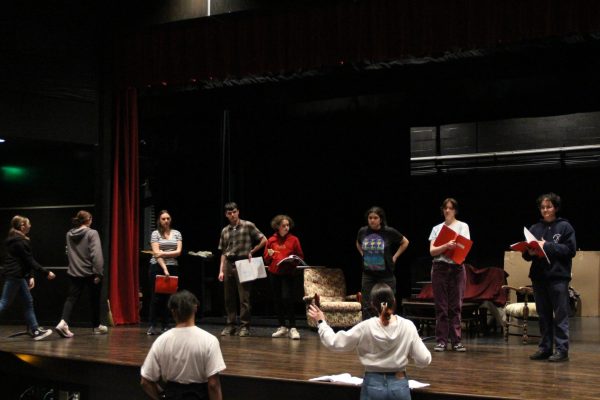Educational Gender Bias and Its Place at Mount Greylock
School communities, while unique in their own ways, often reflect broader issues of the world at large. Even with relatively small and isolated districts, such as ours, it is important to recognize that we are not exempt from worldly issues.
While sexism is often visualized as blatant, explicit, demonstrations of bias, the nuances of gender-based issues permeate deeply into our education systems.
This has historically precipitated the notion that pursuing math and science skills is “for boys”.
The harmful impact of such can be seen through the male-domination of STEM (Science,Technology,Engineering,and Math) careers and educational paths.
In response to this, more contemporary attempts have been made to encourage female students to pursue careers in STEM. Programs like Women in Engineering Proactive Network, National Girls Collaborative Program, and Scientista, were designed to do just that.
However, a 2019 study conducted by Microsoft and KRC Research uncovered that there was still inequity, with female students pursuing STEM fields at a disproportionately smaller rate in comparison to their male counterparts.
One reason for this, they found, was that during high school female students felt a lack of guidance into how to pursue careers in STEM, with many not being taught the applications of STEM education. Other reasons they found for this inequity is the lack of representation of women in STEM.
So how does this apply to Mount Greylock? And perhaps more importantly, what can we do to make sure this inequity does not harbour a culture of educational bias at Mount Greylock?
Well, according to surveyed Mount Greylock students, the pressure on girls to opt-out of STEM based classes was actually minimal, with many female students surveyed saying they felt comfortable choosing science and math classes.
When students were asked if they ever felt pressure to choose certain paths of study based on their gender, many responded similarly to junior Piper Schulman, who answered, “I feel pretty good about choosing the classes I want to do rather than choosing what others think I should do.”
Saville Keyes, a Mount Greylock alumni currently attending Simmons University, shared that she felt “encouraged when it came to taking [math and sciences].”
Perhaps a contributing factor as to why Mount Greylock’s female students feel comfortable pursuing classes in STEM is the representation of women in our school’s science and math curriculums. Lack of representation had been one of the reasons sighted for the STEM gender inequity. However, at Mount Greylock, female math teachers comprise half of the mathematics department, and female science teachers comprise 5/7 of theirs.
Since female students surveyed felt comfortable in science and math classes, are we exempt from educational gender bias as a school?
No.
Another finding in the Microsoft and KRC Research study was that girls struggled to define themselves as “smart” within science and math, believing they had to be perfect to succeed. This drive for perfection was found to dissuade girls from further pursuing science and math. Ruling Our Experience, a research program investigating the impact of gender bias on women’s’ lives, corroborated this finding. They discovered that as female students age their confidence as students decreases, even if they maintain a higher GPA.
“I think as a woman there can be this fear stemming from internalized misogyny,” said Keyes when asked about the effects of this strive for perfection. Keyes’ Sentiments acknowledged that due to sexism’s deep structural roots, an external source does not have to exist for bias to be pervasive.
This emphasizes that when we look at systematic issues, like sexism in education, there is no simple, one-time, solution. Furthermore, having the intention of being a “progressive” school environment just isn’t enough.
While Keyes said that she did not feel actively dissuaded from science and math courses, she also pointed out that you don’t have to look far to find gender biases. One example stated by Keyes was the dress code and it’s tendency to “perpetuate sexualization.”
“You rarely, if ever, see guys getting dress-coded,”she elaborated, “we have to dress ourselves as to not attract unwanted male attention, or be called out for unknowingly doing so.”
To view sexism’s structural pervasion in classrooms, Keyes says to look to when “female students are interrupted or talked over by teachers or their male counterparts.” While it’s subtle, this pattern “shows that there are always steps we can take to improve.”
Overall, Greylock seems to have done a sufficient job in creating an environment where female students, despite historical and modern research trends, feel comfortable taking science and math classes.




